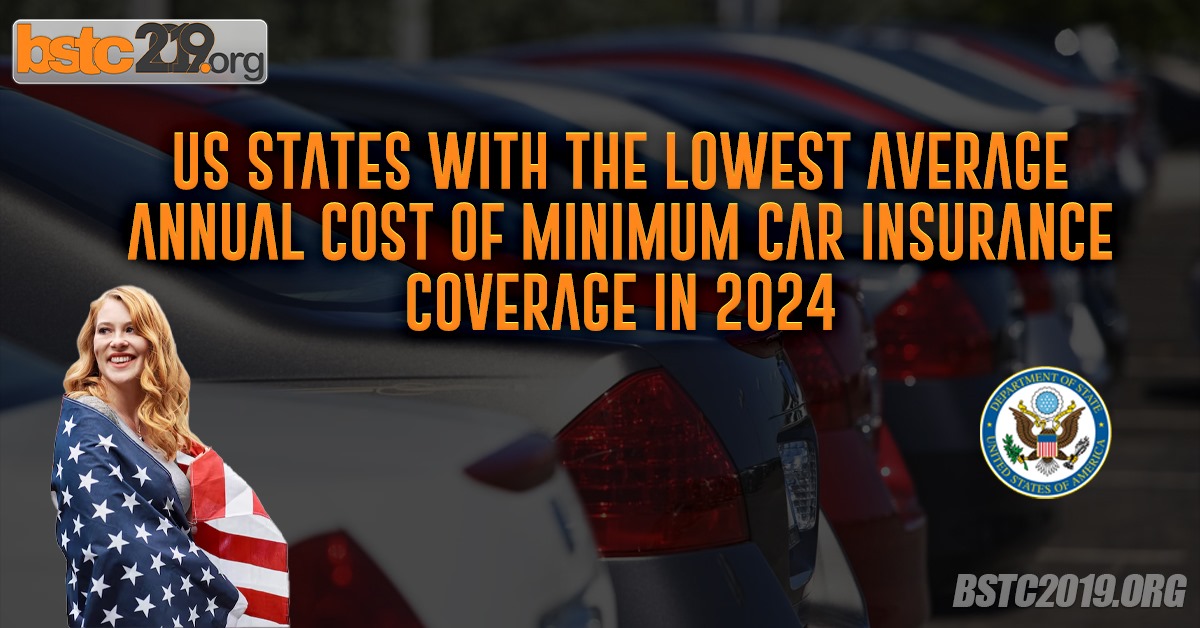Evaluating Lowest Average Annual Cost Of Minimum Car Insurance Coverage
Lowest Average Annual Cost Of Minimum Car Insurance Coverage. Understanding the minimum car insurance coverage requirements is essential for legal and financial protection. Each state has its own rules, often including bodily injury liability and property damage liability, and some have additional requirements.

Common Coverage Amounts
Some states require liability coverage limits like 25/50/25, meaning $25,000 for injuries to one person, $50,000 for all injuries per accident, and $25,000 for property damage. States like Iowa may have lower minimums, such as 20/40/15.
Additional Protections
Uninsured Motorist Coverage: This is required in many states and helps cover expenses if you’re in an accident with an uninsured driver.
Property Protection Insurance: Additional protection in some states to cover specific property damages.
Understanding these requirements ensures you meet your state’s laws, protecting both your finances and legal standing.
Comparing Lowest Average Annual Cost Of Minimum Car Insurance Coverage
Car insurance costs vary by state and provider. Some states and companies offer significantly lower rates for minimum coverage.
Cheapest States for Car Insurance
Regional factors, including traffic conditions, weather, and state regulations, impact car insurance costs. Vermont, for example, has one of the lowest average annual costs at around $1,053, well below the national average of $1,543.
- Vermont: $1,053 annual average cost
- Maine: Low congestion contributes to lower rates
- Idaho: Fewer accidents mean cheaper insurance premiums
Most Affordable Car Insurance Companies
Nationally recognized insurers like Geicoand USAA offer some of the most competitive rates. While USAA caters to military members, it consistently scores well in cost-effectiveness.
Additionally, Travelers and Nationwide can offer discounts depending on coverage levels and qualifications.
Factors Influencing Lowest Average Annual Cost Of Minimum Car Insurance Coverage
Age, Gender, Credit Score, and Driving Record
- Age: Younger drivers, especially teenagers, often face higher rates due to perceived higher risk.
- Gender: Men, especially young men, may pay more as they statistically have more accidents.
- Credit Score: A higher credit score often correlates with lower premiums.
- Driving Record: A clean record keeps costs down; violations like DUIs can sharply increase rates.
State-Specific Variables and Weather Conditions
Insurance costs can vary significantly based on state-specific variables, including population density, traffic congestion, and weather conditions. States prone to severe weather may have higher premiums to account for damage risks.
Understanding Different Lowest Average Annual Cost Of Minimum Car Insurance Coverage
Comprehensive and Collision Coverage
Comprehensive Coverage: Protects against non-collision damage, such as theft or natural disasters.
Collision Coverage: Covers damages from accidents, whether with another vehicle or object.
No-Fault vs. Tort States
No-Fault States: Require personal injury protection, covering injuries regardless of fault.
Tort States: Financial responsibility is on the driver at fault, making adequate liability insurance crucial.
Claims and History’s Role in Lowest Average Annual Cost Of Minimum Car Insurance Coverage
Insurers factor in driving history, claim history, and credit history to calculate premiums. Keeping a clean record, minimizing claims, and maintaining good credit can help lower rates.
- Driving History: Past accidents or violations.
- Claim History: Multiple claims can increase premiums.
- Credit History: Better credit typically leads to lower rates.
FAQ’s About Lowest Average Annual Cost Of Minimum Car Insurance Coverage
What factors contribute to lower car insurance costs?
States with fewer accidents, lower crime rates, and stable weather conditions generally have lower premiums.
Which states offer affordable car insurance for young drivers?
Iowa, Vermont, and North Carolina tend to have lower rates for younger drivers.
What unique insurance regulations do New Hampshire and Virginia have?
New Hampshire doesn’t require insurance, while Virginia offers an uninsured motorist fee alternative.
